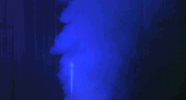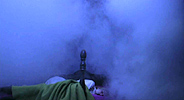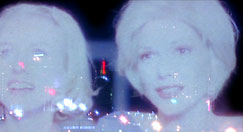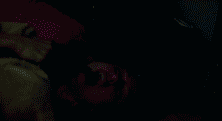|
|
Related: The Corpse Theory: Diane's suicide is not real |
After the party, after the murder, after the sad wishful fantasies of the dream, after she awakens in the torpor of her own bedroom to the reality of what she has done, Diane is defenseless against her guilts and regrets and memories. Like the man in Winkie's who is killed by the realization of his own nightmare, she is killed, literally and figuratively, by the utter collapse of her own dream of stardom and the loss of the fickle, gorgeous, desirable, detestable Camilla - who is Hollywood for Diane. - (Jonathon Valin)
Foreshadowing
Betty is suicidal at the time of the dream and therefore foreshadows her death in certain ways:
-
Dan as proxy of Diane is dying after seeing the monster of her own creation
-
The decaying corpse in her bedroom has it's "psychotic" and "logical" aspects: Betty's composure at Rita being distraught may be cold consideration about how much Camilla (and others) would be horrified at a possible Diane suicide and what Camilla & others did to cause it
-
-
The female singer is introduced as "La Llorona de Los Angeles", a woman who is said to have thrown herself into a river out of grief. And indeed, the singer collapses probably in death. »more
-
After Diane "kills herself" her bedroom kind of turns into Club Silencio. Smoke rises from the bed, blue lights flash, and the bedpost starts to look like the microphone stand. - (fornus)

Club Silencio

Diane's bedroom
-
Some people believe that the sequence in the beginning, when we see the bed and someone is laying down, is not the moment Diane goes to sleep but indeed the moment of her death, but in this case, she didn't die as we can see at the end of the movie, because we hear breathing deeply but there is no screaming or other signs of terror, even if we have to keep in mind that nothing in the dream is like the reality. - (kyru68)
Related Theories: Dying Moment/Afterlife theory | Diane's suicide is not real
 As she is dying, we see
the monster's face again, the one that was behind the
Winkie's. It fades into her face because the monster was part of her, representing a twisted persona that drove her to do something for which she could never forgive herself. Next, as she is dying she also sees the Betty and Rita personas, and the Rita persona has on the blonde wig. It is as though the two personas have finally successfully merged and they are truly happy at last. Ending her own life seems to have been a type of retribution for the murder, since she is now free of the guilt and finally able to embrace both the Betty and the Rita personas in her dying moments.
- (Alan Shaw)
As she is dying, we see
the monster's face again, the one that was behind the
Winkie's. It fades into her face because the monster was part of her, representing a twisted persona that drove her to do something for which she could never forgive herself. Next, as she is dying she also sees the Betty and Rita personas, and the Rita persona has on the blonde wig. It is as though the two personas have finally successfully merged and they are truly happy at last. Ending her own life seems to have been a type of retribution for the murder, since she is now free of the guilt and finally able to embrace both the Betty and the Rita personas in her dying moments.
- (Alan Shaw)
Fallacy?
Actually, Camilla is involved in a car crash and is killed or missing. MD is a tribute to one of Lynch's colleges Jennifer Syme, who died likewise. The appearance of the detectives and the fact that Diane's neighbour from no 12 says "it's been 3 weeks" and the contents of Diane's dream all point to an accident, a car accident - on Mulholland Drive, which is why this is the title of the movie. Maybe Camilla is really missing from the accident scene and the neighbour is just indirectly telling Diane to give up any hope. That would explain Diane saying "you've come back." The reason Diane kills herself is not so obscure. Maybe she misinterprets her own cut and interrupted flashbacks along with the blue key, so that she at the end thinks that she actually had Camilla killed. - (Carsten Lang-Jensen)
The ninety-second coda that follows Diane's suicide is a cinematic space that persists after the curtain has dropped on her living consciousness, and this persistent space is the very theatre where the illusion of illusion is continually unmasked - where the Club Silencio audience as well as the Mulholland Drive spectators are repeatedly reminded of the magician's dialogue, that "This is all an illusion… This is all a recording." All that remains in this space, after Diane is dead and the stage show is over, is not a behind-the-curtain interpretation of the film's meaning, but, rather, the hesitant inhabitation of the blue-haired woman's uncanny position of enjoyment without reason - jouissance.
The suicide just a dream?
|
|
|
Eye lid movement? |
Joe kills
Ed and makes it look like a suicide. It does set us up for at
least considering that Diane's suicide might be staged. There's a
point-of-view shot when Diane "appears to"
commit suicide. Is someone dreaming it up?
Somebody noted that right before
the knocking at the end, Diane's eyes seem to flitter shut for a moment,
then open again a couple of times. This poster believed that this signified
Diane again drifting off to sleep, and the suicide is a further dream.
- (blu-riven)
How can the suicide not be a dream if it leaves her body lying on the bed looking just like that body Betty and Camilla found earlier (until you see the face)? That implied to me that the suicide was really something in Diane's dreams. It could be a dream if we think she didn't really wake up when the cowboy came into her room. - (tgemberl)
The old people come in under the door, but then the lights flash - isn't that a big Lynch hint that tells us we're in a dream? And all of the sudden the old folks are lifesized and chasing Diane. She gets the gun, we see the blue box (which we ONLY see in the dream world) in the drawer, and then eats a bullet. It's quite possible that it's just another (drug induced?) dream that Diane offs herself in. I personally don’t believe that Diane literally commits suicide at the end of the film. Instead, I believe it’s her ultimate conclusion of her destiny. A piece of Diane dies and she’s the one that finally pulls the trigger on that acceptance. - (jschroeder)
I would also like to think that the ending of the film when Diane shoots herself is another illusion because after she does, there's a blue box in the drawer which is more like a symbolism of being in a dream as the killer said he'll slip a blue key, not a blue box and the box when held by Rita lead to waking up from that "dream" so it was part of a dream and here it's probably another reference that her suicide attempt is just another dream. A way to escape reality and feeling guilty over what she's done, what she's become and what she's lost. We also see smokes coming from under the bed after she shoots herself which feel so surreal that they refer to a dream ending or a show on stage ending with the smokes playing the role of curtains closing. - (RinoTheBouncer)

